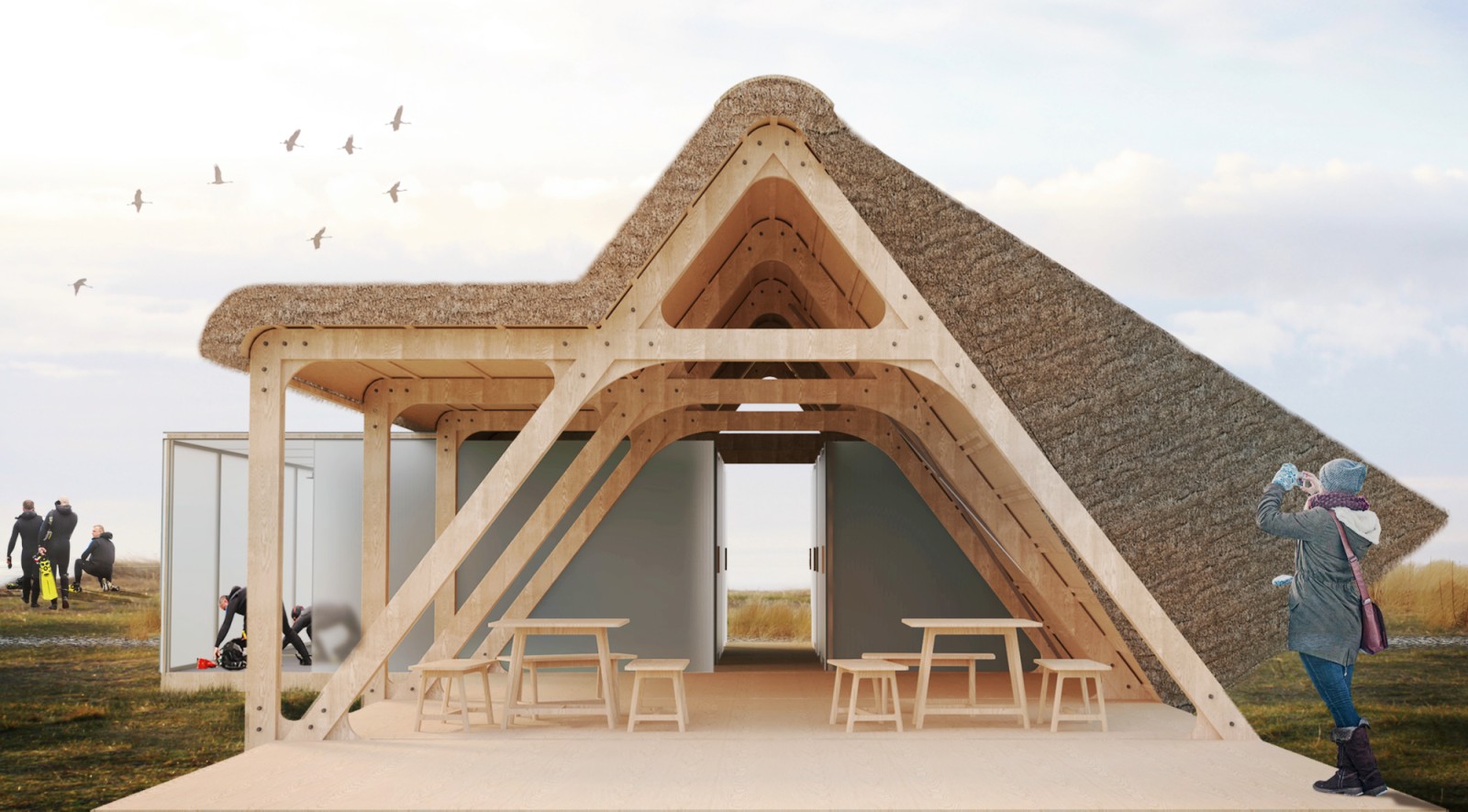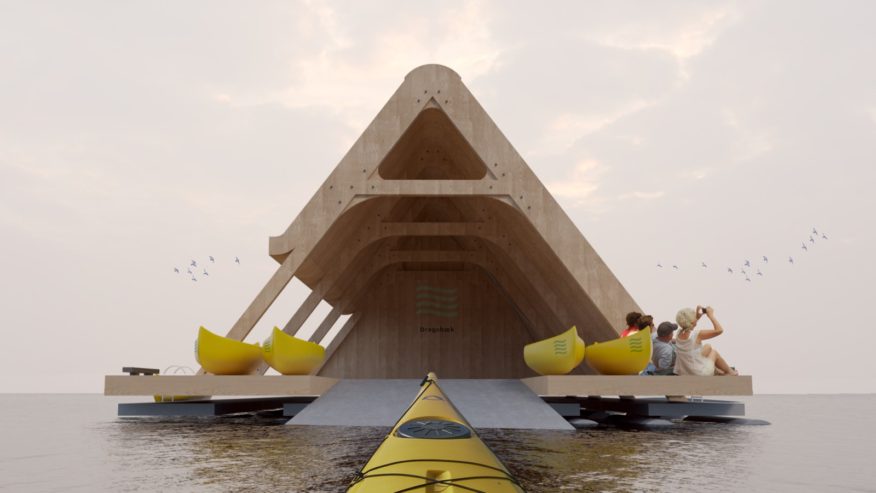
Cold Hawaii is a surf colony on the Western coast of Jutland, which has become a national success project creating life and tourism at the many surf spots along this strip. The competition for Cold Hawaii Inland constitutes a new phase in this endeavour, developing the innermost areas of the region along the calmer, Limfjord area.
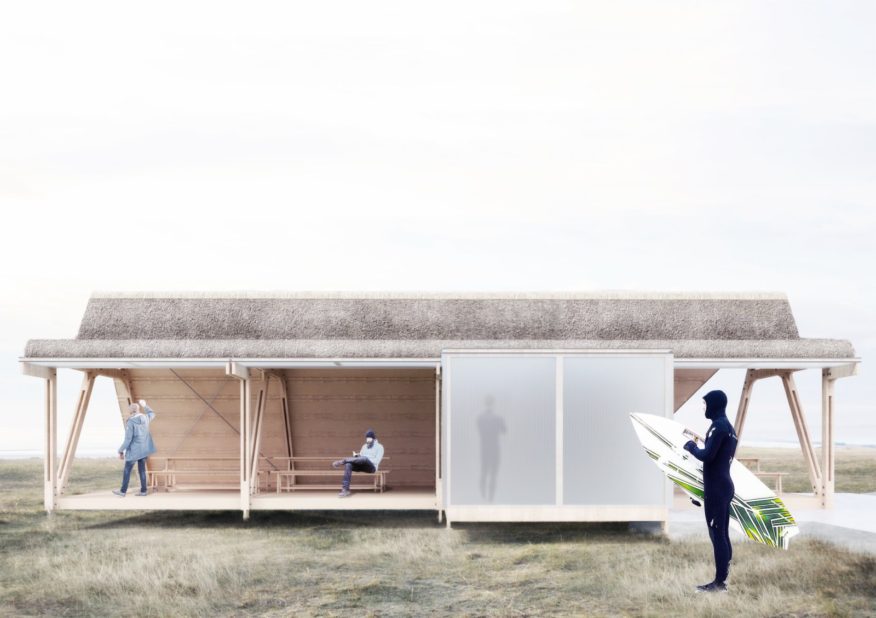
Cold Hawaii Inland includes 10 different sites, each with a varying programme, urban situation and exposure to the environment. From desolate dunal landscapes to sites in urban peripheries, the main function of the architectural interventions is to connect users to the water and facilitate leisure and sports activities. A variety of module typologies house programmes including changing facilities, picnic area, rest rooms, a pedagogical water laboratory, a Finnish sauna, a youth inn, a boat club with kitchen and gym, an art exhibition space, a viewing tower, a kayak hotel and marina promenade facilities.
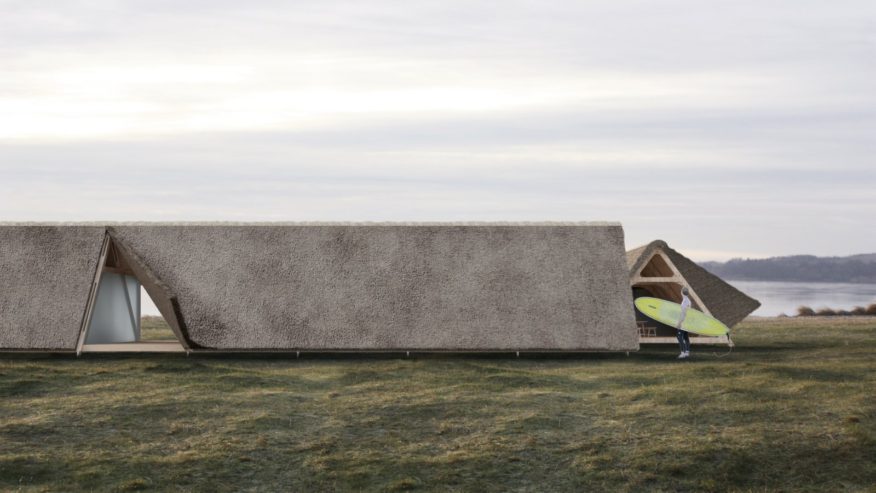
Designed as modular buildings with a thick protection against the wind, the structures open up to the landscape. The modules bring people and places together through the potentials and stories of each site and its landscape. Depending on programme, they are designed as flexible units able to become open-air structures, closed buildings or to host glass modules with storage, changing facilities and other services. The structures use a wood-based modular construction system that can be mass-produced and assembled in different ways at the various sites along Cold Hawaii Inland.

Three different modules were requested; for each module, the team developed a building system in contemporary timber that can also be used for the project’s other building types. We aimed at creating a common expression that bound all sites of Cold Hawaii Inland together, in opposition to standalone iconic buildings. The approach relies on a locally adapted family of form, where buildings are assembled and modified at different locations to support their respective programmes.

The main construction material used here is wooden beams, which are raised to form a roof rack. Still today, this type of assemblage is optimal for the creation of large open spaces, as it provides an open and flexible construction system that can be extended as needed. The method also requires an exterior coating that protects the wood structure from undesirable wind and weather. Such building principle can be traced back to the first long houses built in the Viking age, as well as to most Nordic wooden churches, stables and boat houses.
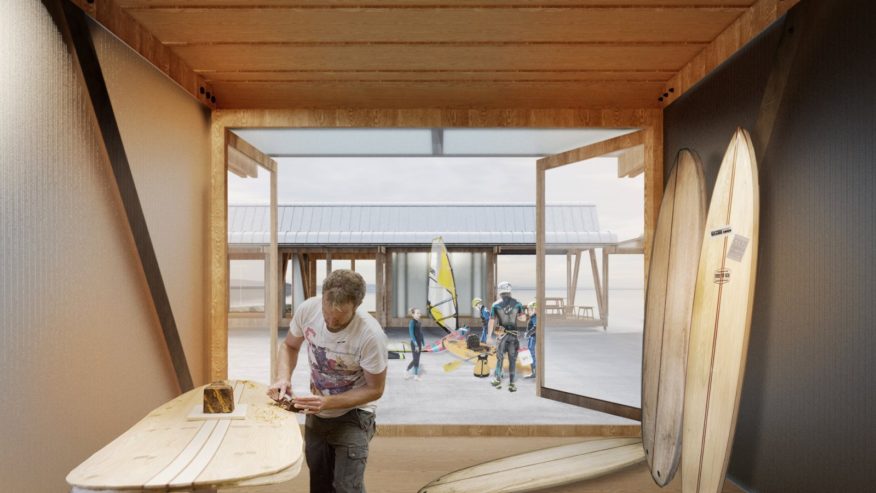
Users’ encounter with the nature of Thy is mediated with a simple building technique that shields them from hostile winds and temperatures. All shelters have a protective side and an open side, with the protective fold always placed against the wind direction, to allow the open side to be used for meeting place, contemplation and sleeping. The most distinct building element is the saddle roof, which gently guides the wind over the structure to create shelter on the opposite side. The lee side lifts up to increase the inner space, enabling the different functions that the shelter will accommodate.

At the main entrance, the fold lifts up to make the entrance visible and welcoming. In most situations, users both see the building and enter it from its protective side. The protective side is made of large clean surfaces, which suggest a public aesthetic and clearly indicate the structure’s programme. The open side of the building is made of light, transparent materials that contrast the heavy protective side. Materials used include polycarbonate – a strong, durable, translucent material – and frosted glass walls.

At clubhouses and meeting rooms, a wall with double glass doors is mounted; this element provides flexibility throughout the year. Polycarbonate is also used as walls in the toilet modules, and as screens where there is a bath. Toilets and urinal polycarbonate walls’ top are perforated to obtain ventilation – similar strategies of openness are used to ensure a constant airflow through the storage modules. All modules are thoroughly waterproof, and – when possible – are raised from the ground, minimizing their footprint impact with immediate soil.

The modules must provide better facilities and simplify users’ (surfers, windsurfers and other water sports persons) access to the lake. We focused on creating family-friendly rooms and improving accommodation for both children and adults, so that the sites become more attractive to people of all ages, sport practitioners or not. This aim is achieved with the design of wind-oriented volumes that frame the area. Additional elements such bridges or decks stretch out and transform into play surfaces for children or training surfaces for adults, while equipment modules can be added when storage is needed. Source by 3RW arkitekter.

- Location: Thy, Denmark
- Architect: 3RW arkitekter
- Landscape architecture: Labland Architects
- Engineering: Rambøll
- Local expert on watersport: Rasmus Johnsen
- Graphic identity: Troels Schwarz
- Client: Thisted Municipality
- Status: Second Place, Competition
- Size: 70 000 m2
- Year: 2018
- Images: Courtesy of 3RW arkitekter

